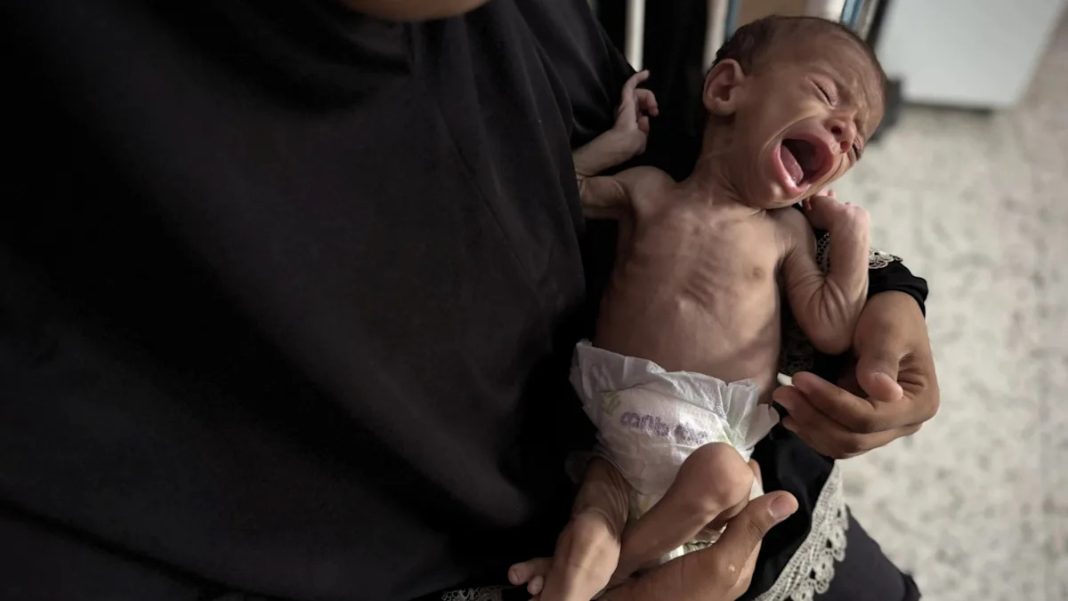Days after the Palestinian group Hamas and Israel declared a ceasefire in Gaza, the flow of humanitarian aid into the besieged territory remains heavily restricted, denying many residents, particularly ailing children, the life-saving help they acutely need.
As of Thursday, fewer than 300 trucks are entering Gaza, instead of the 600 trucks necessary to deliver humanitarian aid. And of the 300 trucks being allowed to enter daily, Al Jazeera has learned that many carry commercial products instead of humanitarian aid.
Al Jazeera’s Hind Khoudary, reporting from Deir el-Balah, said: “Children don’t have anything. They need clothes, shoes, hygiene kits, medical supplies, and nothing is going to be delivered to the population until they have good stock in the warehouses, so that’s why we’re not seeing any distributions happening on the ground now.
“What is entering are the commercial trucks and things that are being sold in the market. But again, Palestinians do not have the ability to buy these items. Gaza residents do not have money. Banks did not open yet,” she added.
At the Patient’s Friends Benevolent Society (PFBS) hospital in Gaza City, doctors describe the situation of some malnourished children as “desperate”, with the medical facility running out of medicine and food, as well as fuel to keep the facility functioning.
“We are still waiting for the medical and other humanitarian aid to reach our hospital,” Dr Musab Farwana, a paediatrician, told Al Jazeera.
“When they arrive, the situation will surely improve, especially for the children, who have been the most vulnerable group suffering from malnutrition in the two years of war.”
Randa Aldhadar, mother of baby girl Ruqayya, told Al Jazeera that she is “desperate” for the humanitarian aid to arrive.
The lack of food has left Randa unable to produce milk for Ruqayya, leaving her severely malnourished and “on the brink of death”.
“The hospital has yet to provide the help necessary for my daughter to recover. Things like biscuits, milk and nutritional supplements, so she can recover and regain her health,” she said.
Two years of Israeli bombardment across Gaza, attacking and destroying many medical facilities and killing hundreds of medics, and a complete humanitarian blockade since April have resulted in the collapse of the territory’s medical infrastructure.
Hamas and Israel agreed last week to cease hostilities and return all remaining Israeli captives – dead and alive – in exchange for about 2,000 Palestinians held in Israeli prisons.
The first phase of the agreement includes the lifting of the humanitarian blockade that would allow the delivery of food, water and medical aid into the territory. But Israeli restrictions are still choking the flow of aid, especially to the neediest patients in hospitals.
At PFBS hospital in Gaza City, Tahani Hassouna is also in anguish as she continues to look after her infant daughter, Alma, who is suffering from a serious heart condition.
“Due to the lack of medical equipment here [PFBS hospital], she’s not getting enough care,” she told Al Jazeera.
“Her illness prevents her from gaining weight, and she has to fully rely on oxygen to be able to breathe,” she said.
Tahani said that every day, she is anxiously waiting for the border to reopen, allowing her and her daughter to travel abroad for a life-saving surgery.
As of Thursday, Israel has yet to announce the reopening of the Rafah crossing in southern Gaza.
COGAT, the Israeli Defence Ministry body that oversees civil affairs in the Palestinian territory, also said on Thursday that no humanitarian aid will pass through the Rafah crossing, claiming this was never agreed upon at any stage. It said aid will continue to enter through the Karem Abu Salem (Kerem Shalom to Israelis) and other crossings.
At al-Shifa hospital, medical director Mohammed Abu Salmiya told Al Jazeera that he has not witnessed any notable progress in terms of health services or the availability of medicines since the ceasefire began.
Salmiya said the health situation in the enclave remains “tragic”, with no changes seen as of yet.

